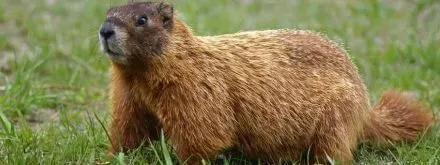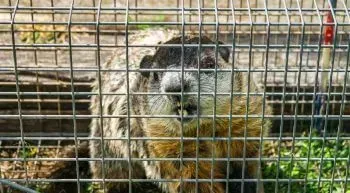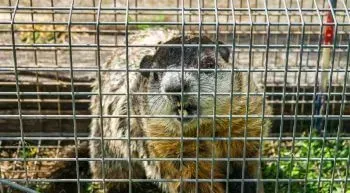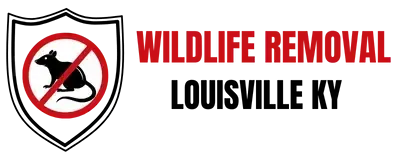Understanding Kentucky Groundhogs: A Guide To Protecting Your Property
Understanding Kentucky Groundhogs: A Guide To Protecting Your Property

Kentucky groundhogs, also called woodchucks, are widespread because of the state's excellent soil, abundant vegetation, and mild temperatures. They are skilled diggers known for creating extensive underground tunnel systems that act as escape routes, nesting sites, and shelters. Their burrowing habits can compromise foundations, damage crops, and weaken fences. Beyond property damage, their presence can pose health risks. Groundhogs may carry diseases like rabies and parasites, which can affect humans and pets. Their burrows can also create physical hazards, causing a risk of trips or falls. These issues highlight the importance of understanding groundhog behavior and implementing proactive measures.
Hunting, trapping, and shooting groundhogs are allowed in Kentucky, provided the guidelines set by local wildlife rules are followed. Adhering to these regulations ensures humane and responsible handling of groundhogs while protecting local ecosystems. Humane practices, such as live trapping and relocation, are preferred to minimize stress on the animals and preserve their ecological role.
If you suspect groundhogs are causing damage to your property, identifying the signs early—such as visible burrows or damage to crops—can help mitigate their impact. Understanding their behavior and implementing preventive measures, like sealing entry points or using deterrents, can also help protect your property.
Kentucky groundhogs, also called woodchucks, are widespread because of the state's excellent soil, abundant vegetation, and mild temperatures. They are skilled diggers known for creating extensive underground tunnel systems that act as escape routes, nesting sites, and shelters. Their burrowing habits can compromise foundations, damage crops, and weaken fences. Beyond property damage, their presence can pose health risks. Groundhogs may carry diseases like rabies and parasites, which can affect humans and pets. Their burrows can also create physical hazards, causing a risk of trips or falls. These issues highlight the importance of understanding groundhog behavior and implementing proactive measures.
Hunting, trapping, and shooting groundhogs are allowed in Kentucky, provided the guidelines set by local wildlife rules are followed. Adhering to these regulations ensures humane and responsible handling of groundhogs while protecting local ecosystems. Humane practices, such as live trapping and relocation, are preferred to minimize stress on the animals and preserve their ecological role.
If you suspect groundhogs are causing damage to your property, identifying the signs early—such as visible burrows or damage to crops—can help mitigate their impact. Understanding their behavior and implementing preventive measures, like sealing entry points or using deterrents, can also help protect your property.

How To Trap A Groundhog: Humane And Effective Solutions For Your Property
Groundhogs may seem harmless, but their digging behavior and addictive taste for plants can cause havoc on your property. These creatures may inflict enormous damage, including chewed-up gardens and destabilized buildings. Their burrowing can also create trip hazards and weaken structural integrity over time. Understanding how to trap a groundhog is the first step in regaining control of your yard.
How To Trap A Groundhog: Humane And Effective Solutions For Your Property
Groundhogs may seem harmless, but their digging behavior and addictive taste for plants can cause havoc on your property. These creatures may inflict enormous damage, including chewed-up gardens and destabilized buildings. Their burrowing can also create trip hazards and weaken structural integrity over time. Understanding how to trap a groundhog is the first step in regaining control of your yard.

How To Trap A Groundhog: Humane And Effective Solutions For Your Property
Groundhogs may seem harmless, but their digging behavior and addictive taste for plants can cause havoc on your property. These creatures may inflict enormous damage, including chewed-up gardens and destabilized buildings. Their burrowing can also create trip hazards and weaken structural integrity over time. Understanding how to trap a groundhog is the first step in regaining control of your yard.
How To Trap A Groundhog Successfully
Trapping groundhogs takes accuracy and forethought. This is how Wildlife Removal Louisville KY solves the situation:
- Understand Groundhog Behavior: Groundhogs are typically active in the early morning and late afternoon. Observing their behaviors ensures a timely and effective trapping.
- Position The Trap Strategically: Place the trap near the burrow entrances or on regularly used pathways. Strategic location is essential for successfully collecting groundhogs.
- Choose The Right Bait: Groundhogs are attracted to fresh fruit, like apples and cantaloupe. Using these baits enhances the likelihood of luring them into the trap.
Knowing how to trap a groundhog is vital, but transferring them securely and responsibly often requires professional assistance. Humane capture and relocation are essential to ensure the safety of both your property and the animal. Professionals trained in wildlife management can provide the expertise needed to handle these situations carefully while adhering to local regulations.
Why Choosing A Professional Groundhog Trap Service Is The Smartest Move
Groundhogs can damage your house or property, and their presence can lead to catastrophic problems if not removed immediately. Given the difficulties they provide, why is professional and compassionate removal the ideal answer offered by Wildlife Removal Louisville KY?
- Our professional services include setting up the right groundhog trap to handle critical issues, such as preventing property damage from groundhog burrows.
- We also address health and safety concerns, protecting you and your pets from diseases and physical harm.
- Our trained professionals are prepared to manage removal while complying with local rules and ethical principles, giving you peace of mind that the procedure is legal and humane.
- Humane removal promotes environmental balance by transferring groundhogs to suitable habitats. This reduces stress for the animal while preserving its role in the environment.
Choosing professional groundhog trap services benefits both humans and wildlife. At Wildlife Removal Louisville KY, we offer compassionate and effective groundhog removal to protect your property and the environment. Take the first step today by reaching out to us for expert assistance.
Want to learn more about how we can help? Visit our
homepage for additional information about our wildlife removal services.
Why Choosing A Professional Groundhog Trap Service Is The Smartest Move
Groundhogs can damage your house or property, and their presence can lead to catastrophic problems if not addressed promptly. Considering the challenges they pose, why is professional and compassionate removal the best solution provided by Wildlife Removal Louisville KY?
- Our professional services include setting up the right groundhog trap to handle critical issues, such as preventing property damage from groundhog burrows.
- We also address health and safety concerns, protecting you and your pets from diseases and physical harm.
- Our trained professionals are prepared to manage removal while complying with local rules and ethical principles, giving you peace of mind that the procedure is legal and humane.
- Humane removal promotes environmental balance by transferring groundhogs to suitable habitats. This reduces stress for the animal while preserving its role in the environment.
Choosing professional groundhog trap services benefits both humans and wildlife. We offer compassionate and effective groundhog removal to protect your property and the environment. Take the first step today by reaching out to us for expert assistance.
Want to learn more about how we can help? Visit our
homepage for additional information about our wildlife removal services.
